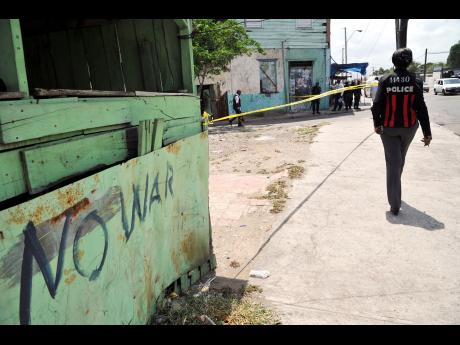Wealthy in fear because of crime rate, study shows
Professor of Political Sociology and Director of the Institute of Criminal Justice and Security Anthony Harriott has called on policymakers to take note of a study that found that persons of wealthy means are expressing higher levels of fear of the crime rate than other sectors of society.
Harriott warned that the findings contained in the Political Culture of Democracy in Jamaica and in the Americas, 2014 could "trigger capital flight, productivity losses/imbalances and the drying up of vital investment projects, among others things".
The study has found that one in two Jamaicans identified security-related concerns as the most serious national problem. "Despite the unusually hard economic times, socio-economic concerns rank second and a full 10 percentage points lower than issues related to crime and security."
The report stated that although crime itself is a national problem, it is unevenly distributed across communities. This, it said, has sparked a higher level of fear in areas where crime is a somewhat new phenomenon.
Presenting a perspective on the fifth cycle of two yearly survey findings, Harriott also noted that Jamaicans were far more alarmed by the national picture than the local picture.
The report stated that crime and crime-related concerns are identified as the most serious problems facing Jamaica. At the same time, the analysis relating to crime and insecurity reveals a general downward trend in both victimisation and citizens' sense of neighbourhood insecurity.
Speaking on 'Crime, Insecurity and Policing' at the launch of the survey findings at The Jamaica Pegasus hotel on Wednesday, Harriott said: "When we examine perceptions related to citizens' safety over time, we see that insecurity has declined."
The surveys, which were carried out in face-to-face interviews in 2012, using national representatives stratified and clustered probability samples in both urban and rural areas, found that 43.4 per cent of respondents felt "somewhat safe" while 39.5 per cent felt "very safe".
The AmericanBarometer 2014 found that another 12.7 per cent felt unsafe and 4.4 per cent felt very unsafe in its perception of neighbourhood security.
As it relates to 'Perception of Security: walking alone in the daytime', the survey found that 46.1 per cent felt "very safe", 43.1 felt somewhat safe; 5.7 per cent, "neither safe nor unsafe"; 3.5 per cent, "somewhat unsafe"; and 1.1 per cent felt very unsafe.
The round of studies included 26 countries in the Americas and more than 41,000 interviews. The study allows for comparison of the results of individual countries with others of the region.
Harriott said that the results point to a general decrease in the average citizen's perception of the neighbourhood over the five rounds of the survey, which started in 2006.
He noted that nearly 50 per cent of the Jamaican population perceive crime and violence and related security concerns as the most serious national problem in 2014. "Yet Jamaica recorded a mere seven per cent personal victimisation rate over the same period of observation," he said.
Endorsing the report, Harriott said that high levels of perceived insecurity might not always correspond to high levels, or even rising levels, of crime.
"It is quite possible that perceptions of insecurity are heightened in contexts in which the media frequently report on heinous and sometimes brazen acts of criminality, including increasing prevalence of gang activities and violent crimes in some previously crime-free areas," he said.
In this regard, the report noted: "Community capacity for intervention that would facilitate the reduction of exclusions and disparities which engender division, distrust, and conflict are assumed to be greater to the degree that social capital is greater."

